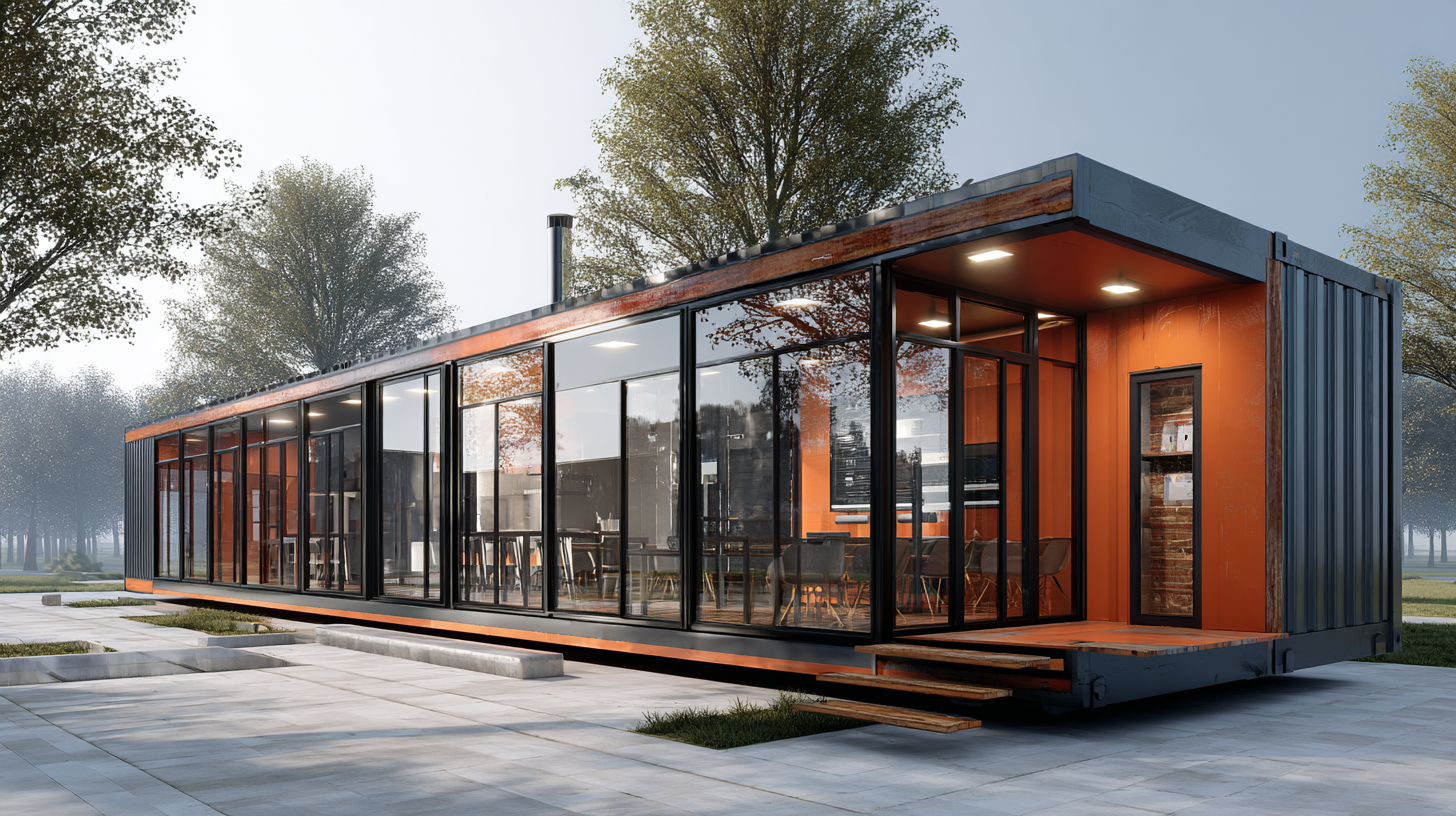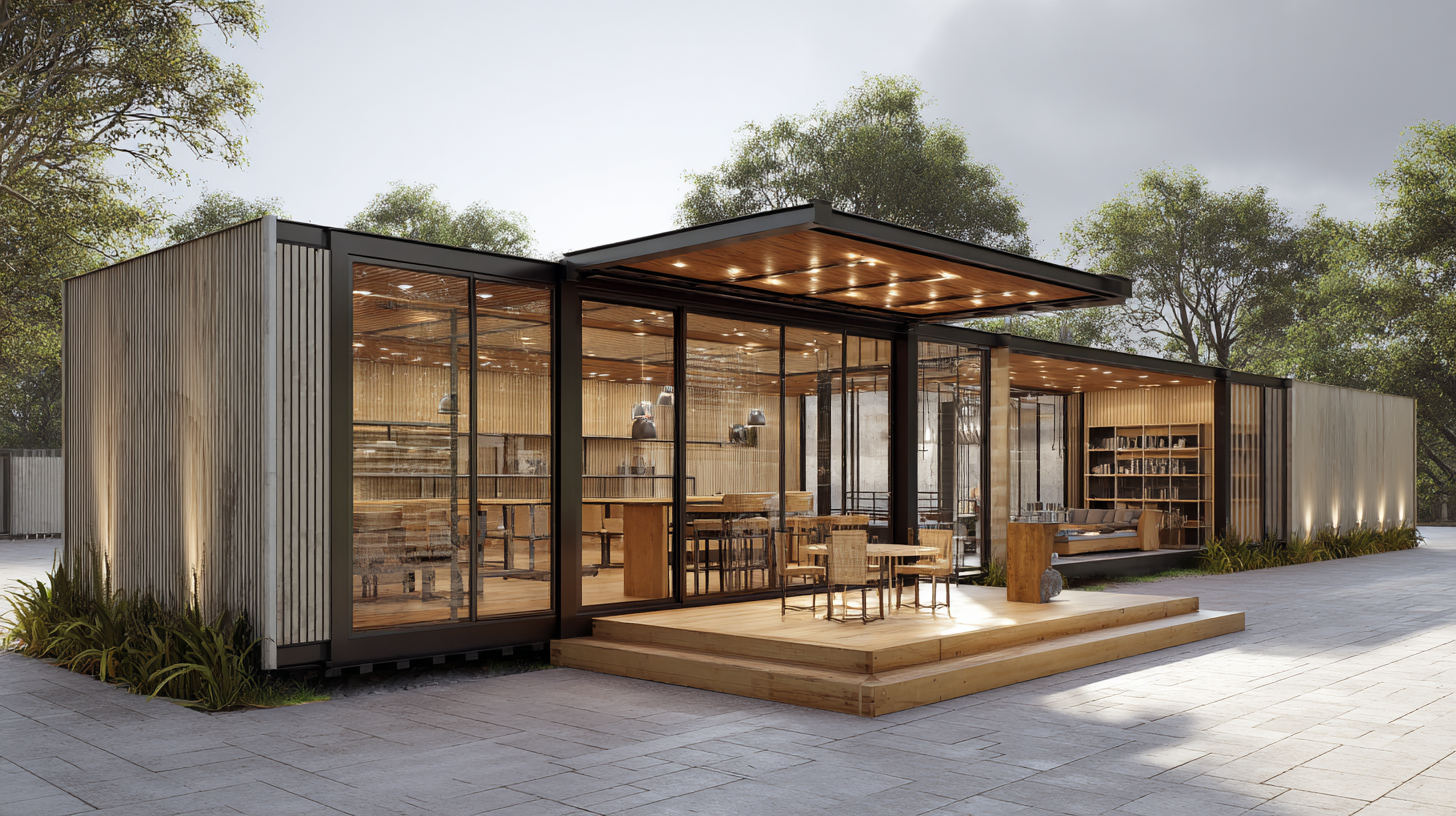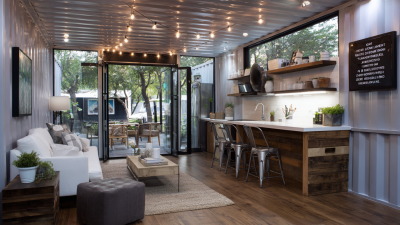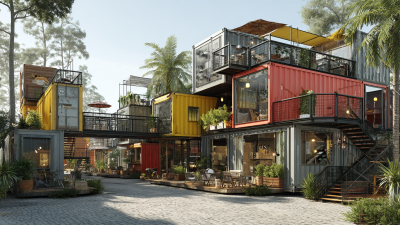2025 Top Modular Container Buildings: Innovative Designs Transforming Spaces
In recent years, the construction industry has witnessed a paradigm shift towards sustainable and efficient building solutions. Modular container buildings have emerged as a pivotal trend, revolutionizing traditional architectural practices by offering flexibility, cost-effectiveness, and rapid deployment capabilities. According to a report by MarketsandMarkets, the global modular construction market is expected to reach USD 157 billion by 2023, reflecting a significant annual growth rate. This surge is driven by the increasing demand for affordable housing and the need for quick construction solutions in urban areas.
The innovative designs of modular container buildings not only optimize space but also provide unique aesthetic value, making them ideal for various applications, from residential homes to commercial offices. Furthermore, a study by McKinsey & Company highlights that modular construction can reduce project timelines by up to 50% while minimizing waste and energy consumption. As sustainability becomes a central focus in the architectural field, modular container buildings stand at the forefront of these transformative efforts, showcasing how ingenuity can redefine urban landscapes. In this article, we will explore the "Top 5" modular container buildings leading this revolution, highlighting their inventive designs and the impact they are having on modern living and working environments.

Innovative Modular Container Designs Revolutionizing Urban Housing Solutions
In recent years, innovative modular container designs have emerged as a viable solution to the pressing issue of affordable housing in urban areas. As cities face unprecedented growth and a rising population, these unique structures are transforming the landscape of urban living. The integration of shipping containers into housing solutions offers a sustainable approach that not only meets the urgent demand for affordable homes but also repurposes materials that would otherwise contribute to waste. Some cities have turned to these modular solutions, creating solar-powered homes aimed at addressing homelessness, showcasing how creativity can provide practical solutions for society’s most vulnerable.

Furthermore, cities like Chicago are leading the charge in embracing shipping container innovation, employing these structures for various applications, including affordable housing and pop-up retail spaces. The popularity of container homes is expected to surge, with the market projected to reach approximately USD 95.74 billion by 2033. This shift indicates a broader acceptance of alternative housing trends, as communities acknowledge the necessity of cost-effective, sustainable solutions to counteract growing housing crises faced by students and low-income residents alike. Through these inventive designs, urban environments are not just adapting but evolving to better serve their inhabitants.
Sustainable Materials: Eco-Friendly Choices for Container Construction
The rise of modular container buildings in recent years has been significantly influenced by the increasing demand for sustainability and eco-friendly construction practices. These innovative structures are not just practical but also minimize environmental impact by utilizing recycled shipping containers, which are abundant and often seen as waste in traditional logistics.
By repurposing these containers, architects and builders can reduce the carbon footprint associated with sourcing new building materials, making container construction a viable option for sustainable living.
Incorporating eco-friendly choices into container construction goes beyond just the materials used. Many designs focus on energy efficiency, utilizing technologies such as solar panels and green roofing systems to reduce energy consumption. Furthermore, the integration of sustainable insulation materials enhances thermal performance, allowing these structures to maintain comfortable living conditions with less reliance on heating and cooling systems.
As modular container buildings continue to evolve, they present a promising solution for those seeking environmentally conscious alternatives without sacrificing modern aesthetics or functionality.
Cost Efficiency in Modular Container Buildings: Reducing Project Budgets
Modular container buildings have emerged as a transformational force in construction, particularly when it comes to cost efficiency. According to a report by the Modular Building Institute, modular construction can reduce project costs by 10-20% compared to traditional methods. This is largely due to the speed of assembly and streamlined processes inherent in modular design. By utilizing repurposed shipping containers, developers not only decrease material costs but also minimize waste, leading to a more sustainable approach.
Furthermore, the National Institute of Building Sciences states that the use of modular construction can lead to project completion times that are 30-50% shorter. This accelerated timeline translates to reduced labor costs and quicker time-to-market for new developments. As businesses increasingly prioritize budget efficiency and sustainable practices, modular container buildings are becoming an attractive option. Whether for commercial, residential, or temporary structures, these innovative designs are reshaping how we view space and costs in the construction industry.
Space Optimization Techniques in Modern Modular Designs
The 2025 landscape of modular container buildings is remarkably transforming, especially with innovative space optimization techniques becoming central to modern designs. As urban living continues to evolve, the demand for functional and efficient spaces increases. Modular constructions are able to adapt to various needs, whether it is for residential, commercial, or public use. With the global market for embedded waste bins projected to reach $2.9 billion by 2025 and $4.444 billion by 2033, showcasing a CAGR of 6.2%, it highlights the growing emphasis on sustainable and optimized space solutions.

As we witness the evolution of furniture and furnishings, predictions suggest the sector will grow from $807.3497 billion in 2025 to $5.3819 trillion by 2033, indicating a CAGR of 5.2%. This upward trend reflects the robust demand for innovative spatial solutions that cater to modern living.
Tip: When designing for modular spaces, consider multifunctional furniture that can be easily reconfigured to maximize usability. Efficient storage solutions can vastly improve the spatial experience in smaller environments. Leveraging technology can also enhance these designs, ensuring that spaces are both functional and aesthetically pleasing. By integrating smart technologies into modular designs, developers can create environments that are not only stylish but also highly adaptable to future needs.
Future Trends in Modular Container Use: Market Growth Projections and Innovations
The modular container market is experiencing significant growth, especially in the realm of energy storage systems (ESS) and data centers. In 2024, the global ESS market is projected to reach approximately $14.7 billion, with an impressive compound annual growth rate (CAGR) of 15.2%, expected to surge to $55.1 billion by 2032. This expansion is fueled by a growing demand for sustainable energy solutions and the versatility of modular container structures in various applications.
Moreover, the global data center market is on a steady upward trajectory, with forecasts suggesting it will grow to $464.6 billion by 2032, achieving a CAGR of 10.3% during the forecast period from 2024 to 2032. Notably, the modular container data center sector alone is expected to experience substantial growth, with projections indicating an increase from $16.28 billion in 2025 to $65.65 billion by 2032, reflecting a remarkable CAGR of 22.0%. These trends showcase the innovative designs and functionalities that modular container buildings offer, transforming how we approach infrastructure development across various industries.
Related Posts
-

Transforming Tiny Spaces: How Containers Revolutionize Modern Living
-

Sustainable Living Trends Revolutionizing Freight Container Homes for Eco Friendly Housing Solutions
-

The Rise of Sustainable Living Through Shipping Container Flats
-

Transforming Urban Living: The Rise of Innovative Shipping Container Flats in Modern Architecture
-

Transforming Everyday Life with Innovative Containers for Living Space
-

The Ultimate Guide to Choosing the Right Container Sizes for Your Home: Insights and Expert Tips


